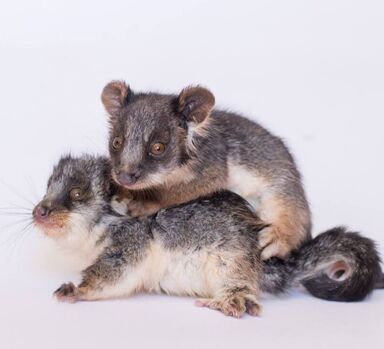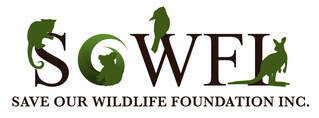Becoming a SOWFI Wildlife Volunteer

SOWFI have a dedicated group of volunteers working around South Australia to rescue, rehabilitate and release thousands of animals every year. We also have an equally dedicated bunch of people that volunteer to manage the business to ensure good governance and best business practices.
To become a Wildlife Volunteer with SOWFI you need to complete a Wildlife Rescue or Basic Care course. Completing the Rescue 101 training enables you to rescue a range of sick, injured and orphaned native animals. As a rescuer, you will take rescued animals to a vet or experienced carer for assessment immediately after the rescue. You may also be picking animals up from vets to transport them to a carer.
The rescue and care of species such as snakes and bats requires the completion of additional specialist courses not conducted by SOWFI.
To find out more about our Wildlife Rescue course, visit our training page.
You may also choose to attend our specialist animal care courses, which are designed to deliver the skills necessary to provide rehabilitative care for particular species.
Many wild animals that require rescue are already very sick or seriously injured. Volunteers must work with vets and experienced carers to make decisions that are in the animal’s best interests, and for some seriously injured and sick animals this can include developing appropriate care plans, finding specialist care or euthanasia.
What level of commitment is necessary?
As a volunteer, you decide on the level of activity and involvement you are comfortable with. You can choose to only be a rescuer or a carer, or both. There are also a number of administrative roles that help support fundraising and management activities.
In terms of wildlife rescue and care, time and equipment are major considerations. If you do make the commitment to become a rescuer and carer there are experienced carers and team leaders who will guide and support you.
What equipment is needed?
Some equipment is essential to carry out wildlife rescue and care. Equipment does not need to be expensive or sophisticated to begin with and may be accumulated over time. Rescue 101 will provide you with detailed information on what you will need for many of the rescues you may encounter and starter kits will be available to purchase at the training.
What about pets and children?
Having pets and/or young children and being a wildlife carer are not mutually exclusive. However, wildlife in care needs to be kept away from all people (unnecessary contact with carers as well) and pets to minimise stress on the animals and improve their chances of survival when they are released.
It is illegal to take native animals from the wild and keep them as pets. Wildlife that come to SOWFI only stay in care until they can be released back into the wild. When wildlife is in care it’s our duty to always act in the best interest of the animal. Unnecessary contact with wild animals can induce stress and impede their ability to be successfully released back into their natural environment and carry out natural behaviours such as finding food and avoiding predators, such as domestic pets.
SOWFI Membership Fees & Benefits
Our organisation provides many benefits to wildlife carers and rescuers.
Annual Membership fees are $55 ($45 conc) for individual or $85 ($75 conc) for families.
Benefits include:
- free refresher courses (once you have completed a course, refresh as many times as you like for free - we encourage this with new research and learnings updating course material)
- access to other training delivered by network partners
- earn points through the Volunteer Subsidy Program (VSP) and use them to purchase specialised wildlife food, fuel vouchers and Petstock vouchers. The VSP distributes funds donated by the public in an equitable way to our hard working carers and rescuers
- free nesting boxes for possums and a qualified team to install them when its time for release back into the wild
- access to our tailor made Caring for Wildlife Volunteers program looking after your mental health and well-being
- monthly team communications via email, private team chat groups as well as regular social gatherings to get to know your fellow SOWFI members
- annual Spring workshop with interesting guest speakers and a chance to be part of group work to solve problems or brainstorm future directions
- annual picnic at Belair NP to celebrate our volunteers during Volunteer Week
How do I get started?
To get started in Wildlife Rescue or Wildlife Care, book into our next training course where you will be able to attend a short interview, fill in necessary paperwork and pay for annual membership. Our training runs through our quieter months in Autumn and Winter.
Read about our upcoming courses.
Administrative Support
To come on board in an administrative role, please complete your registration of Interest, attach your CV or resume with a cover letter detailing how you would like to get involved and email it to [email protected]
Alternatively, you can register now to receive email updates about upcoming courses.
If you have any questions about accessing or participating in training please contact [email protected]
To become a Wildlife Volunteer with SOWFI you need to complete a Wildlife Rescue or Basic Care course. Completing the Rescue 101 training enables you to rescue a range of sick, injured and orphaned native animals. As a rescuer, you will take rescued animals to a vet or experienced carer for assessment immediately after the rescue. You may also be picking animals up from vets to transport them to a carer.
The rescue and care of species such as snakes and bats requires the completion of additional specialist courses not conducted by SOWFI.
To find out more about our Wildlife Rescue course, visit our training page.
You may also choose to attend our specialist animal care courses, which are designed to deliver the skills necessary to provide rehabilitative care for particular species.
Many wild animals that require rescue are already very sick or seriously injured. Volunteers must work with vets and experienced carers to make decisions that are in the animal’s best interests, and for some seriously injured and sick animals this can include developing appropriate care plans, finding specialist care or euthanasia.
What level of commitment is necessary?
As a volunteer, you decide on the level of activity and involvement you are comfortable with. You can choose to only be a rescuer or a carer, or both. There are also a number of administrative roles that help support fundraising and management activities.
In terms of wildlife rescue and care, time and equipment are major considerations. If you do make the commitment to become a rescuer and carer there are experienced carers and team leaders who will guide and support you.
What equipment is needed?
Some equipment is essential to carry out wildlife rescue and care. Equipment does not need to be expensive or sophisticated to begin with and may be accumulated over time. Rescue 101 will provide you with detailed information on what you will need for many of the rescues you may encounter and starter kits will be available to purchase at the training.
What about pets and children?
Having pets and/or young children and being a wildlife carer are not mutually exclusive. However, wildlife in care needs to be kept away from all people (unnecessary contact with carers as well) and pets to minimise stress on the animals and improve their chances of survival when they are released.
It is illegal to take native animals from the wild and keep them as pets. Wildlife that come to SOWFI only stay in care until they can be released back into the wild. When wildlife is in care it’s our duty to always act in the best interest of the animal. Unnecessary contact with wild animals can induce stress and impede their ability to be successfully released back into their natural environment and carry out natural behaviours such as finding food and avoiding predators, such as domestic pets.
SOWFI Membership Fees & Benefits
Our organisation provides many benefits to wildlife carers and rescuers.
Annual Membership fees are $55 ($45 conc) for individual or $85 ($75 conc) for families.
Benefits include:
- free refresher courses (once you have completed a course, refresh as many times as you like for free - we encourage this with new research and learnings updating course material)
- access to other training delivered by network partners
- earn points through the Volunteer Subsidy Program (VSP) and use them to purchase specialised wildlife food, fuel vouchers and Petstock vouchers. The VSP distributes funds donated by the public in an equitable way to our hard working carers and rescuers
- free nesting boxes for possums and a qualified team to install them when its time for release back into the wild
- access to our tailor made Caring for Wildlife Volunteers program looking after your mental health and well-being
- monthly team communications via email, private team chat groups as well as regular social gatherings to get to know your fellow SOWFI members
- annual Spring workshop with interesting guest speakers and a chance to be part of group work to solve problems or brainstorm future directions
- annual picnic at Belair NP to celebrate our volunteers during Volunteer Week
How do I get started?
To get started in Wildlife Rescue or Wildlife Care, book into our next training course where you will be able to attend a short interview, fill in necessary paperwork and pay for annual membership. Our training runs through our quieter months in Autumn and Winter.
Read about our upcoming courses.
Administrative Support
To come on board in an administrative role, please complete your registration of Interest, attach your CV or resume with a cover letter detailing how you would like to get involved and email it to [email protected]
Alternatively, you can register now to receive email updates about upcoming courses.
If you have any questions about accessing or participating in training please contact [email protected]









